ARTICLE

A game to explore the secrets of the being, in solitaire or with another person.
With the graphic cooperation of Eliot Baum and Viv Tanner, it was made by Causa Creations, an Austrian independent game company founded in 2014 in Vienna. The company thinks on games as entertainment and also as meaningful and enriching experiences connecting us, defying perceptions and bringing insights about the world around us.
Sefirot's narrative is based on esoteric tales, mystic stories and the Judaic Kabbalah. It is said that some sages and priestesses were cast out of their homelands by the wrath of the orthodoxies, and were established on an ancient island placed between nebulas and reefs off the Arabian coast, around 1562. Sages and priestesses founded there the Dioscoria island, a place that became their refuge and where they developed a society that favored empathy, playfulness and the prowess of the mind. To celebrate it, they used to share a pastime: Sefirot.

Sefirot is that ancient game allowing a playful activity, fortune-telling and meditation. A Tarot deck is the central piece of the pack, which offers a new discourse for Tarot communities. It includes 78 cards to spread in a two-side board (for a single or two-players game), and combine according to some rules and personal choices, while exploring and understanding the divine, in oneself as well as in the partner.
The deck has been designed beyond Marseille or Rider-Waite-Smith conventions, or orthodox criteria. Of a very meticulous and detailed artisan elaboration, the illustrations guide the players to discover the occult in constellations and symbologies, deepening into additional layers of meaning inside of decorative elements. A very careful elaboration also offers a long-term and high quality product, in attention to environmental sustainability.
Personal choices
Whatever the use of Sefirot, it can be played as a solitary game or with another person (to cooperate or compete). Depending on the chosen version, players use one side of the board or the other one.
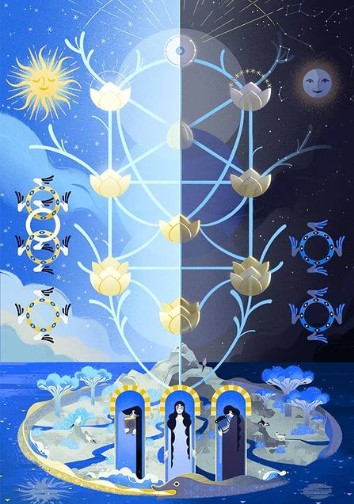

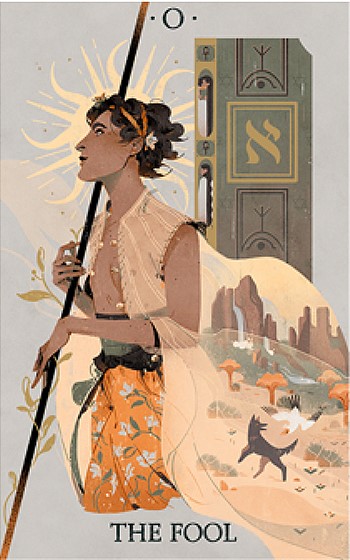

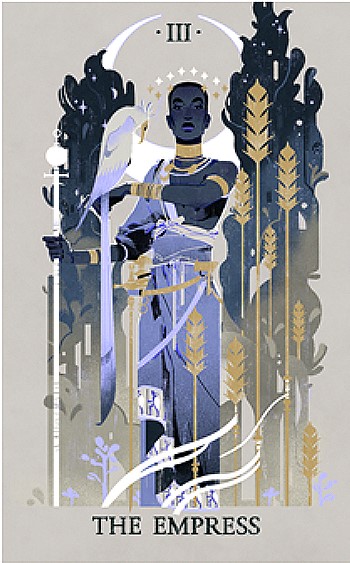
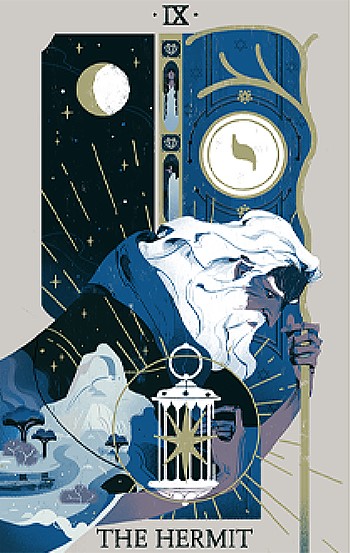


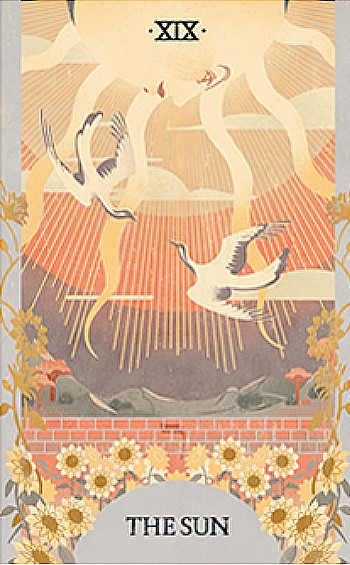
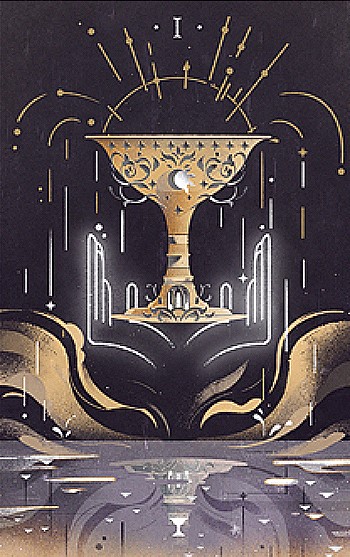
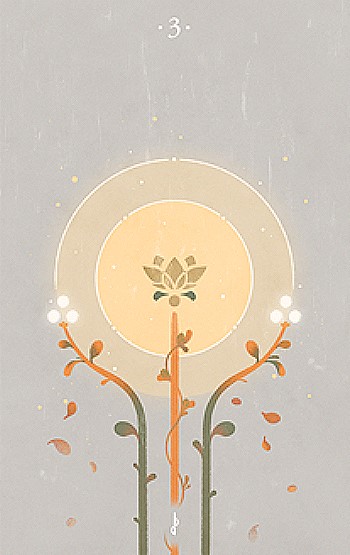

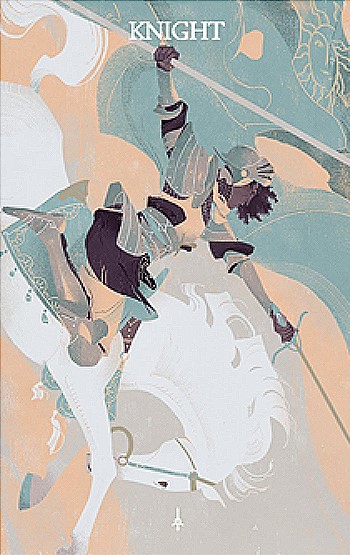
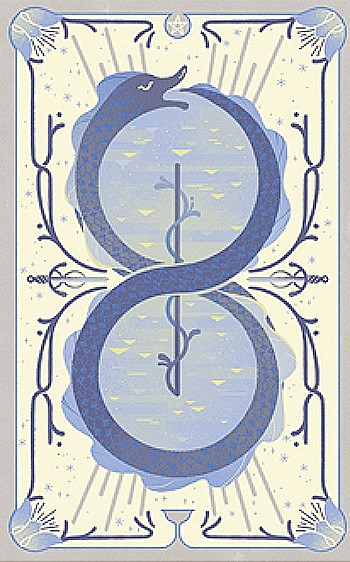
Players select major cards and place them on the board's free spaces. Those cards will have to be "solved" for divine knowledge to be revealed.
For players to choose where to place them, they have to know the spaces and also keep in mind the main purpose of the game: is it about exploring, fortune-telling, competing, cooperating?
Each player also takes minor cards, one by one or gathered as a group, for combining them with a specific major card or in between two of them (creating like a "bridge"). Combinations are meant to solve major ones by placing minors upon them, or in the space between them (if there's a bridge).
For deciding which minors will be gathered and the major one to be solved, players must keep in mind the cards' numeric values.
Allegories
The sum of values is what allows placing cards and combining them across different spaces, sometimes because of the game's rules, sometimes because of the players' choices, or both.
Used as a divinatory practice or to explore oneself or a relationship, the game itself is something to be observed as it is played: the choice of rows and columns to be filled on the board, the combination of cards to solve them or build bridges, the reassignation of cards from one space to another, personal speculations, the areas where the own cards connect to those of the other player... All of these circumstances are allegories about divination, self-exploration or the relationship of players.
Basic actions
filling
Spaces on the board (sefirah and spheres) are filled with major cards. If they are already filled, the cards remain in the player's hand.
absorbing
A major card can absorb one or more minors (the ones the player has grouped) only if the sum of the values of the latter ones equals or is lesser than its number.
"solving" by pairing
When the value of a major card equals the sum of values of the minors absorbed by it, the major card is considered to be solved.
Following the same logics, for solving bridges, the total value of the minors in between the major ones has to equal the sum of values of the major ones connected by the bridge (which must not have minors upon them).
In any case, if the sum absorbed is lesser, then an unsolved value remains until another minor card is placed upon the major one (or the bridge). Like before, the value of the minor one must equal the value of the major one (or the total value of majors in the bridge).
Versions
know yourself
To reach higher knowledge, you must first know yourself. As you strive for knowledge, you explore your relationship with the divine realm.
It's the version to play in solitaire, on a board inspired by the sephira, the 10 emanations of consciousness or force of creative life by which divine patterns are revealed to Humankind.
On the board, players climb The Tree of Life from base to top, across three columns representing body, mind and soul, meeting destiny challenges while the duality of growth and decadence is overcome.
Aside The Tree, four Grace Fields are represented by winged rings (angels): these optional spaces are available when the rules force to move minor cards from The Plane of Matter (at the bottom of The Tree) to The Heavens (top area), but it happens they cannot be moved because their values exceed those of the major ones already emplaced in there.
lover's discourse
Knowing your own soul provides insight into divine patterns, and likewise, understanding divine patterns provides insight into your soul. By sharing the pursuit of higher knowledge and discovering each other’s divine patterns, two partners gain a better understanding of each other, and of the divine.
This is a two-players version, for cooperating, building a common existence and negotiating. It's played on the Celestial Field board, where 13 spaces between the Sun and Moon must be filled, with luminaries emplaced in the extremes.
Players also occupy those opposite places on the board, one closer to the Sun and the other one closer to the Moon, with the chance to place minor cards upon the major ones of the partner!
The luminaries can also be combined in the centre of the board (Solstice), which in this version means there are cooperation and good communication between the players.
warring planets
The prowess of the mind is the highest good. Wisdom can be accumulated by the gleeful activity of play. What better way to train the mind than in joyful competition? A play for the stars…a battle of the wits.
This is another two-players version, for competing and battling for the stars. Played on the same Celestial Field board, the goal is taking spaces away: the player who fills more areas and solves more cards reaches a higher score and wins. A player can also win if is always able to make a move and is not trapped because of following the rules.
Both players also compete for areas next to major cards: if minor ones are emplaced in there, they become Guards and the major ones cannot take their places away. But in these cases the majors remain unsolved and players don't score.
More curiosities
Other rules and options add more variations to the game. For example, in the solitaire version, The Fool can only be solved if emplaced in Da'at space although it absorbs several minor ones because has a value of 40! The card can also be played as a late-game bonus.


In the two-players versions, the Sun and Moon in Solstices have also special values when they match minor cards. And the game can even be more customized by changing some of the values to absorb and/or annul, as it happens in the solitary version for experts, with Grace Fields not available. Anyway, some constants remain in all of the versions:
- what is placed on the board cannot be removed;
- what is solved does not admit other cards upon it anymore;
- if the rules force to move minor cards but there are no major ones emplaced in the destiny spaces, the minors are discarded;
- if the rules force to move minor cards but majors cannot absorb them (because they exceed their values) and the optional spaces are not available either (when the Grace Fields are already filled or the version doesn't include them), then the game ends! This is a bad forecast if Sefirot is being used as a divinatory practice.
Orders
Causa Creations has taken ahead a first fundraising campaign in Kickstarter during March/April 2021, and a new one has been announced on July 2024. Follow this link for more info on the options on demand: wallpapers and pdf's, 78 cards in a sliding box, a two-side board game, an art book with a great displaying of designs (120 pp, 11.57" x 8.18"), pins, figurines, impressions with cards motifs (with or without signature, 5.78" × 8.26") and a wooden box crafted by Budapest's box makers. People may customize their packages even more by adding other complements such as impressions, altar cloths, more decks and additional boards.

Other options and updates await to be offered on demand!: stickers, bookmarkers, adorns and golden borders (in boxes, cards and books), hard-covers, illustrated stories, additional impressions, deluxe boxes, new cards and a fourth game version called Taroguelike! Meanwhile, watch an introduction in English language (with Spanish subtitles) from Vanillery Garden channel:





Comments
Join and leave a message. I always answer personally, and as soon as possible.